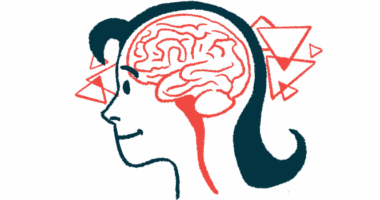Neuralink’s brain-computer interface trial recruiting in Canada
Toronto hospital chosen as first Canadian site to test implant

The University Health Network (UHN) in Toronto was selected as the first site in Canada to be part of a clinical trial testing Neuralink‘s brain-computer interface (BCI) in people unable to move their limbs due to amyotrophic lateral sclerosis (ALS) or spinal cord injury.
The start of patient recruitment for the trial, CAN-PRIME (NCT06700304), follows Health Canada clearance allowing Neuralink to launch the study in the country. The trial expects to enroll up to six adult patients, ages 19 and older, who will be followed for up to six years.
The Neuralink device, called the N1 implant, is surgically placed in a region of the brain involved in movement intention to help people with quadriplegia, or limited function in all four limbs, control external devices with their thoughts.
“We are incredibly proud to be at the forefront of this research advancement in neurosurgery,” Kevin Smith, PhD, UHN’s president and CEO, said in a hospital press release. “As the first and exclusive surgical site in Canada to perform this procedure, we will be continuing to shape the future of neurological care and further defining our track record for doing what hasn’t been done.”
A similar trial, PRIME (NCT06429735), began in the U.S. early this year after the U.S. Food and Drug Administration cleared its launch. That first-in-human trial is recruiting up to five patients, ages 22-75. After completing PRIME, participants may enroll in CONVOY (NCT06710626), a trial designed to assess patients’ ability to control devices, such as robotic arms, with the N1 implant.
Brain-computer interface offers hope for independence
ALS, a neurodegenerative disease, and spinal cord injury can make people lose the ability to move their limbs and impair their ability to speak. Patients’ ability to communicate is severely hampered if they are unable to talk or type. The Neuralink BCI technology offers the possibility of restoring some independence and improving day-to-day interactions.
BCIs are designed to translate intended-movement brain signals into actions, enabling people to use external devices without physical movement. Several of these devices have shown promise in ALS patients.
Neuralink’s N1 implant, containing a small, wirelessly chargeable battery, connects directly to the brain through ultra-thin, flexible threads, minimized for tissue preservation. These threads are so fine that a specialized surgical tool, the R1 Robot, is required to insert them precisely and safely into the patient’s brain.
The device is protected from moisture and contaminants by a durable enclosure to ensure safety inside the body.
Once implanted, it processes brain signals through advanced, low-power electronics and transmits them wirelessly to the Neuralink N1 user app. This app translates the patient’s brain signals into actions, so that thinking about an intended movement such as typing on a computer or navigating a smartphone produces the intended result.
“This landmark surgery has the potential to transform and improve outcomes for patients who previously had limited options,” said Andres Lozano, PhD, UHN neurosurgery chair and lead investigator for the CAN-PRIME study.
Evaluating safety, functionality
CAN-PRIME will evaluate the safety and functionality of the N1 device, the R1 robot performing the surgery, and the BCI software. The surgical procedure will involve a team of surgeons, scientists, and medical experts from UHN’s Toronto Western Hospital, which specializes in neurology.
To participate in the study, patients must have had severe quadriplegia due to ALS or a spinal cord injury for at least one year without improvement. Other requirements include a life expectancy of at least 12 months, the ability to communicate in English, and the presence of a stable caregiver.
Interested patients and their caregivers can visit Neuralink’s Canadian patient registry website to apply or learn more. Participants will be reimbursed for study-related travel expenses.
The study will last about six years, divided into a primary study stage of about 18 months and a five-year follow-up period. There will be regular monitoring via at-home and in-person clinic visits, as well as two or more BCI research sessions per week.
“This is a perfect example of how scientific discovery, technological innovation, and clinical expertise come together to develop new approaches to continuously improve patient care,” said Bradly Wouters, PhD, executive vice president of science and research at UHN. “As Canada’s [number] 1 research hospital, we are proud to be leading this important trial in Canada that has the goal to improve the lives of individuals living with quadriplegia or ALS.”








